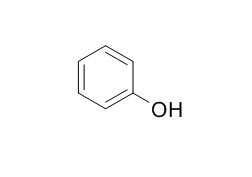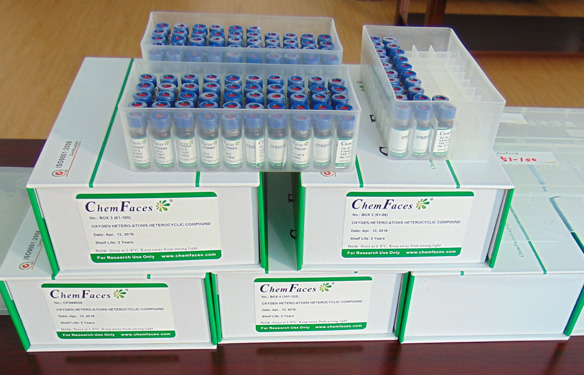Phenol
Phenol, anthocyanin and ascorbic acid have antioxidant capacity.
Inquire / Order:
manager@chemfaces.com
Technical Inquiries:
service@chemfaces.com
Tel:
+86-27-84237783
Fax:
+86-27-84254680
Address:
1 Building, No. 83, CheCheng Rd., Wuhan Economic and Technological Development Zone, Wuhan, Hubei 430056, PRC
Providing storage is as stated on the product vial and the vial is kept tightly sealed, the product can be stored for up to
24 months(2-8C).
Wherever possible, you should prepare and use solutions on the same day. However, if you need to make up stock solutions in advance, we recommend that you store the solution as aliquots in tightly sealed vials at -20C. Generally, these will be useable for up to two weeks. Before use, and prior to opening the vial we recommend that you allow your product to equilibrate to room temperature for at least 1 hour.
Need more advice on solubility, usage and handling? Please email to: service@chemfaces.com
The packaging of the product may have turned upside down during transportation, resulting in the natural compounds adhering to the neck or cap of the vial. take the vial out of its packaging and gently shake to let the compounds fall to the bottom of the vial. for liquid products, centrifuge at 200-500 RPM to gather the liquid at the bottom of the vial. try to avoid loss or contamination during handling.
Asian J Beauty Cosmetol2022, 20(2):183-191
J Korean Society of Food Science & Nutrition2021, 50(9): 962-970
British Jou. Med.&Med. Research2014, 1802-1811
J. Korean Wood Sci. Technol.2022, 50(5):338-352.
Front Chem.2024, 12:1385844.
Eur J Pharmacol.2022, 917:174744.
Plants (Basel).2021, 10(6):1192.
Br J Pharmacol.2018, 175(6):902-923
Nat Prod Communications2018, 10.1177
Food Sci Nutr.2023, 11(9):5532-5542.
Related and Featured Products
Food Chemistry, 2007 , 102 (3) :777-83.
Antioxidant capacity, phenol, anthocyanin and ascorbic acid contents in raspberries, blackberries, red currants, gooseberries and Cornelian cherries[Reference:
WebLink]
METHODS AND RESULTS:
Raspberry (Rubus idaeus), blackberry (Rubus fructicosus), raspberry x blackberry hybrids, red currant (Ribes sativum), gooseberry (Ribes glossularia) and Cornelian cherry (Cormus mas) cultivars and native populations of varied pigmentation, originally from the Mediterranean area of Northern Greece, were assayed for antioxidant activity (determined as ferric reducing antioxidant power (FRAP) and deoxyribose protection), ascorbic acid, Phenol, and anthocyanin contents. FRAP values ranged from 41 to 149 μmol ascorbic acid g-1 dry weight and protection of deoxyribose ranged from 16.1% up to 98.9%. Anthocyanin content ranged from 1.3, in yellow-coloured fruit, up to 223 mg cyanidin-3-glucoside equivalents 100 g-1 fresh weight in Cornelian cherry, whereas Phenol content ranged from 657 up to 2611 mg gallic acid equivalents 100 g-1dry weight. Ascorbic acid content ranged from 14 up to 103 mg 100 g-1 fresh weight.
CONCLUSIONS:
The present study outlines that the native Cornelian cherry population is an extremely rich source of antioxidants, demonstrating its potential use as a food additive.



